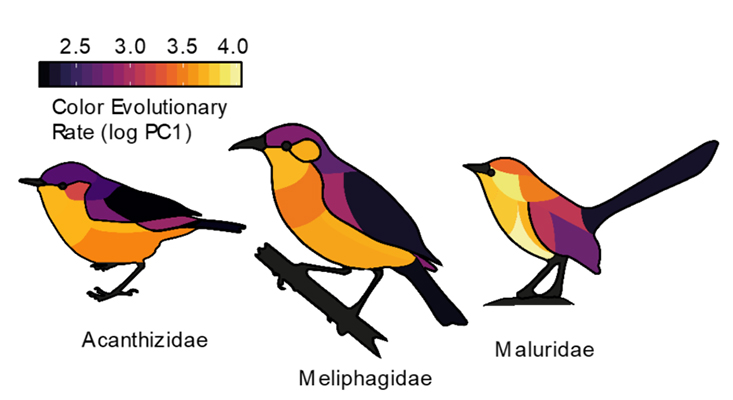Dynamics of diversity: which parts of morphological evolution are predictable?
Natural history is replete with booms and busts of organismal diversity. Many adaptive radiations have their origins in stochastic events that unlock novel opportunities, but how predictable are organisms’ responses to those opportunities? Where does the stochasticity end and a predictable pattern of diversification begin? These are challenging questions to be sure, but the availability of phylogenetic and morphological data at broad taxonomic scales is a great opportunity to make progress. We use macroevolutionary models to compare the rate and trajectory of morphological diversification across different clades, regions, and times. While this research has focused primarily on Australasian honeyeaters and allies as a model clade, we have many fruitful collaborations with invertebrate zoologists as well.

Example publications:
- Friedman, N. R., V. Remes, E. P. Economo. 2019. A morphological integration perspective on the evolution of dimorphism among sexes and social insect castes. Integrative and Comparative Biology 59, 410-419.
- Economo, E. P., N. Narula, N. R. Friedman, M. D. Weiser, B. Guenard. 2018. Nature Communications 9, 1778.

